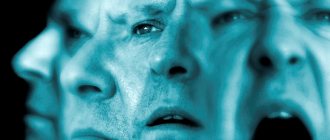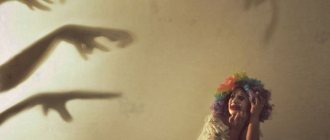A neurotic disorder in which a person is always in a sad mood, generally inhibited and inactive, is usually called depressive neurosis. It is often accompanied by autonomic and somatic disorders, and the patient’s sleep is disturbed. With all this, the patient does not cease to be optimistic about the future, he also maintains his ability to work in order to carry out his professional activities, in addition, his personality also does not change deeply. To diagnose depressive neurosis, you need to consult a neuropsychiatrist.
For its treatment, psychotherapeutic techniques are used in conjunction with medications such as antidepressants, sedatives, psychostimulants, antipsychotics, and also in conjunction with physiotherapy.
The concept of depressive neurosis is often replaced by “neurotic depression.” By the way, not all experts consider it an independent disease.
Depressive neurosis, as a rule, develops in straightforward and purposeful people who are accustomed to hiding their inner experiences and not showing them to others. In addition, it affects those who have low self-esteem, who experience certain difficulties in making any decision, or who have difficulty adapting to any change.
Call us now:
8
Prices for Ultramed clinic services
Why does depressive neurosis occur?
This condition occurs due to external circumstances that traumatize the psyche. The reasons that lead to the occurrence of this condition are very significant for the patient and last for quite a long time. Psychotraumatic situations that lead to depressive neurosis are of two types.
- Neurosis can arise after numerous failures that affect several areas in the patient’s life, and because of which he begins to consider his life “unsuccessful.”
- It can also occur with “emotional deprivation,” that is, if the patient hides his relationship with someone, he is unable to communicate with family, and so on.
As a rule, the cause of depressive neurosis is traumatic circumstances that have existed for a long time. The patient begins to consider the current circumstances insoluble, and strives not only to find a solution to the problems, but rather to hide the negative emotions associated with it. As a result, he may develop functional disorders of the central nervous system, primarily autonomic and somatic disorders, from which depressive neurosis begins.
Causes of the disease
The trigger for a mental disorder is any traumatic situation that puts pressure on a person’s psyche for a long time (or once, but strongly). As a result, mental health suffers and sooner or later a breakdown occurs.
The factor that triggered the development of the disease could be anything, including:
- forced long silence, inability to share your problem with your close circle;
- traumatic separation from a loved one (in particular, if we are talking about the death of a person);
- complexes associated with appearance, aggravating self-doubt (for example, with disability or external defects);
- living in a state of conflict with relatives (especially if they live nearby) for a long time;
- excessive workload (especially if it is unloved), ongoing conflict with superiors or colleagues;
- problems in the financial sector;
- intrapersonal conflicts (for example, inability to meet one’s own expectations), etc.
This diagnosis is also often encountered by individuals who take everything too close to their hearts. Unfortunately, the consequences of this condition are expressed by quite noticeable physiological symptoms and the development of psychosomatic diseases in the future. That’s why it’s so important to get help from a psychotherapist on time.
How does depressive neurosis manifest?
As a rule, it is accompanied by the following symptoms:
- The patient's vital activity decreases and he becomes more lethargic
- He's in a depressed mood
- His thinking also slows down and he begins to speak slowly.
If the patient just begins to fall into such a state, then he experiences a depressed mood along with various vegetative and somatic disorders, that is, he may experience:
- Dizziness,
- Cardiopalmus,
- Changes in blood pressure,
- Stomach and intestinal dysfunctions.
In addition, the patient loses his appetite. All this leads to the patient being sent for a medical examination, as a result of which symptomatic therapy is prescribed.
Sometimes, even if the necessary therapy is carried out, the patient feels increasingly weak, his blood pressure constantly drops, and his mood worsens. The patient is always sad, lacks positive emotions, and stops enjoying life. His motor activity also decreases, he begins to think slowly, speak quietly and slowly. The patient stops looking for entertainment, it is difficult for him to contact someone, although he may begin to succeed at work, since depressive neurosis does not affect his professional activities, and even on the contrary, many patients become completely absorbed in their activities in order, for example, to escape from their unsuccessful family relationships.
As a rule, depressive neurosis is accompanied by insomnia, night awakenings, the patient cannot fall asleep for a long time, he often wakes up at night, and at this time his heartbeat may increase, and he may feel anxiety, although the patient is not fixed on the pain in the heart. In the morning, the patient usually feels weak and overwhelmed.
Depressive neurosis differs from the usual depressive state in mildly expressed clinical symptoms that do not develop into psychosis. People suffering from depressive neurosis maintain a sense of self-control, respond adequately to everything that happens around them and do not stop contacting other people. They do not have thoughts of suicide, and they do not lose their optimism about their future. For example, patients diagnosed with psychotic depression see no prospects for their future. In this case, on the contrary, when thinking about his plans, the patient may not even take into account the current unfavorable circumstances.
Reactive depression
Another severe form of manifestation is reactive depression. This is an acute psychotic disorder against the backdrop of a severely traumatic situation. A person is so shocked by the events that have happened that he literally disconnects from the world and withdraws into himself. Outwardly, he may look either extremely excited, or completely in control, reasonable and even cheerful. But this is only apparent calm. At any moment such a person can break loose and cause trouble. Therefore, in difficult life circumstances, it is better not to leave the patient, especially if his behavior has changed to the opposite. You need to talk to him in a calm tone and give him a herbal sedative. Along with acute depressive symptoms, with this disorder, symptoms of psychosis are also observed: psychomotor agitation, fears, and possibly delusional-hallucinatory symptoms.
How to diagnose depressive neurosis
Diagnosing depressive neurosis is quite difficult, since the patient does not think that his well-being is connected with the psychological situation, and when consulting with a specialist, he may not even mention that any traumatic circumstance is pressing on him. That is why very often signs of depressive neurosis are attributed to some kind of somatic disease, for example, chronic gastritis, colitis, and so on. It is very important that such a patient consult a neuropsychiatrist. He will carefully question the patient in order to determine the cause of the disease and identify the patient’s tormenting experiences. To exclude somatic pathology, the patient is prescribed a series of examinations (for example, electrocardiogram, ultrasound) and medical examinations by specialists such as a cardiologist, gastroenterologist, and so on.
It is very important to distinguish the symptoms of depressive neurosis from other neuropsychiatric disorders. When diagnosing depressive neurosis, it is necessary to take into account the fact that it is often combined with depressive symptoms and other neurotic manifestations. It is necessary to carefully examine the history and mental status of the patient in order to distinguish the state of depressive neurosis from other types of depression or the depressive stage of manic-depressive psychosis, which is characterized by a recurrent sudden nature and significant mental disorganization of the person.
Types of depression
First, you need to figure out whether depressive symptoms have reached the level of a disease or whether this is a manifestation of a secondary depressive syndrome within the framework of the underlying condition.
Depressive syndrome has less pronounced manifestations, the cause of these disorders is clearly visible, the manifestation of symptoms is not stable: short “light” and “dark” periods replace each other.
When depression itself is felt by a person as a painful state of loss of strength, lack of interest in life and has a persistent decrease in mood.
Depressive neurosis and its treatment
Depressive neurosis can be effectively cured only if, in parallel with psychotherapeutic treatment, therapy is carried out using medications, as well as physiotherapeutic methods. If a patient is diagnosed with depressive neurosis, then his treatment is carried out as follows. The psychotherapist convinces the patient to logically work through the entire traumatic situation so that the patient can change his attitude towards such circumstances. In addition, they often resort to the method of self-hypnosis as an additional method. At the same time, the patient pronounces certain phrases and expressions that are aimed at giving him a new perspective on a specific problem.
As a rule, psychotropic drugs, and more specifically antidepressants, are used for drug therapy for depressive neurosis. In addition, taking into account the peculiarities with which this disease occurs, doctors can often use tranquilizers, antipsychotics, sedatives and nootropic psychostimulants during treatment. It must be borne in mind that by carrying out professionally selected drug therapy, without resorting to psychotherapeutic courses, it is impossible to obtain a complete recovery. In this way, the patient’s condition can only be temporarily or partially improved.
In addition, various physiotherapeutic methods, such as various types of massage, darsonvalization, electrosonotherapy, acupuncture, and other methods, can help improve well-being. The necessary physiotherapeutic procedures that will be optimally combined will be selected by the physiotherapist, and he must take into account all the individual characteristics of the patient.
Antidepressants
Amitriptyline, a tricyclic antidepressant with a pronounced sedative (calming) effect, remains a powerful and fast-acting drug for depression. It is convenient in that it can also be used by injection in the form of droppers and injections.
Also included in the group of tricyclic antidepressants are imipramine, doxepin, mianserin, trazodone and lofepramine. They are usually well tolerated, have a pronounced therapeutic effect, and doctors have accumulated experience in their use for various mental conditions.
There is a separate class of tetracyclic antidepressants. They differ somewhat in action. Thus, lerivon has a longer duration of action and a good hypnotic effect.
The second popular group of antidepressants are MAO inhibitors (monoamine oxidase). This large group of drugs, unfortunately, has become less widespread due to more pronounced side effects, elimination through the liver in almost 100% form, unwanted interactions with other medications and a special diet that excludes the consumption of cheese, liver and alcohol. But moclobemide can be prescribed as the medicine of choice, imipramine can be prescribed for senile (senile) depression, selegiline is used for Parkinson’s disease. They have a good stimulating effect and can activate an elderly patient. Iprazide is a selective representative of this group with a powerful antidepressant effect. But now it is rarely used due to possible undesirable effects and long-term presence in the patient’s body.
SSRIs for depression
Selective serotonin reuptake inhibitors are the latest generation antidepressants. They have good anti-anxiety properties, stabilize mood and almost do not cause drowsiness. Most drugs in this group are well tolerated, there is a large selection of drugs - you can choose a drug for each patient: fluoxetine, escitalopram, paroxetine, sertraline and many others. The mechanism of antidepressant action is based on blocking the uptake of serotonin in the chain of transmission from the nerve to the blood. Thus, it is preserved in a free form and replenishes the deficiency of serotonin in the body. Some representatives of this class have the same effect in relation to dopamine and norepinephrine, which also has a beneficial effect on maintaining mental balance under stress, when the amount of these mediators rapidly decreases.
Antidepressants are now the most popular medications for a wide variety of mental and physical illnesses. They are able to relieve certain types of pain (for example, migraine). They are often prescribed for psychosomatic diseases: hypertension, gastric ulcer, irritable bowel syndrome. Treatment of fears, anxiety, obsessive-compulsive disorder, anorexia/bulimia and many other diseases occurs with the addition of an antidepressant to the drug regimen.
In view of this, people taking antidepressants have many questions about their use. Let's try to answer at least some of them.
Depressive neurosis and its outcome
If the treatment of this disease was carried out correctly, in the right direction, using all the above methods, then the patient after such therapy completely recovers and begins to live his previous life. If its treatment is delayed, then over a long period of time it can transform into various neurotic disorders, thereby complicating the patient’s mental state. That is why it is very important to diagnose depressive neurosis in time and begin to treat it in order to avoid further complications, so that the world around us will shine with bright colors.
Other drugs for depression
To treat depressive disorders, medications from a variety of psychopharmacotherapy groups can be used. Thus, mood stabilizers are used to treat bipolar affective disorder; for alcoholic depression, doctors often prescribe anticonvulsants; nootropic drugs can be added to the treatment of organic and senile depression. In addition, restoration of the nervous system often requires the use of B vitamins, essential amino acids and anti-anxiety drugs. It all depends on the type of depression and concomitant diseases.
Acupuncture for depression
Depression is responsive to many types of therapy. Neurological reflexologists widely use acupuncture and other types of acupuncture to treat this type of disorder. But you need to be patient to complete the full course of procedures and constantly inform the reflexologist about your current health.
Physiotherapy for depression
Color therapy is most suitable for depressed patients. Everyone knows the Luscher test for actual emotion. So, this procedure is capable, using colors of certain tones, to change a person’s sensory state.
Light therapy - white light around: walls, linen, tiles can actively reflect ultraviolet and infrared rays of the sun. The patient is placed in such a room and spends some time there. This may be accompanied by aromatherapy with brain-activating scents and music therapy. The effect of this procedure is noticeable immediately - a smile on your face and a light head.
For a long time in Rus', the blues were banished by using a broom in the steam room and diving into an ice hole. Therapeutic baths, showers and saunas help restore a person’s taste for life.
Massage for depression
Depending on the condition, an experienced rehabilitation therapist influences the reflex zones with different strengths. A course of massage accelerates the blood, stimulates the brain indirectly through the active zones of the body, and returns the body to its former tone and elasticity.
Literature
- Karavaeva T.A. Principles and algorithms of psychotherapy for anxiety disorders of a neurotic level // St. Petersburg Psychoneurological Research Institute named after. V.M. Bekhtereva", 2016.
- Generalized anxiety disorder: clinical recommendations // Developer of clinical recommendations: Russian Society of Psychiatrists, 2015.
- Zabylina N. A. Issues in the diagnosis of mixed anxiety and depressive disorder // Journal of Siberian Medical Sciences, 2008.
- Shitov E. A. Neurotic and somatoform disorders: guidelines for students in the discipline “Psychiatry” // State Budgetary Educational Institution of Higher Professional Education Ryaz State Medical University of the Ministry of Health of Russia. – Ryazan: RIO Ryaz State Medical University, 2013.
Neurotic disorder in children
Neuroses in children are quite common, and more often in boys than in girls. Sometimes their manifestations are difficult to mistake for symptoms of a disease. These are obsessive actions such as pulling out hair, picking your nose with your finger, pulling your earlobe, biting your lip, or sucking your fingers. Childhood neurosis can also manifest itself as compulsive counting. The child counts anything: steps, letters, squares of tiles, but he himself cannot give an explanation why he is doing this.
Other neurotic symptoms include:
- nervous tics - the child seems to wink, shrug his shoulders, stutter;
- fear reaching the point of panic. It is especially noticeable before bedtime. This could be the fear of going to bed, being alone, fear of the dark, fear of going to school;
- hysterics with fits and screams occur when the child’s wishes are not fulfilled;
- urinary incontinence.
Children with neuroses are lethargic, have poor appetite, and suffer from insomnia.
The cause of this condition is very often conflicting relationships in the family, especially the divorce of parents. Another group of provoking factors is a stressful situation accompanied by severe fear: a dog has bitten, a child has witnessed an unpleasant situation. The cause may also be fatigue, both mental and physical.
Other causes include past infections, intoxications, and damage to brain cells.
A child psychiatrist treats children's neurotic disorders. The main method of treatment is still psychotherapy. The following types are used: fairy tale therapy, play therapy, hypnosis. Medications are also used. These are mainly nootropic and restorative drugs, vitamin-mineral complexes, and sedative herbal remedies. Tranquilizers and antidepressants are used extremely rarely.
Parents are required to create a warm and friendly atmosphere in the family for their child. The daily routine should be distributed in such a way that there is enough space for both work and rest. It is very important to moderate your child’s presence on the Internet and be sure to involve him in some kind of sport.









